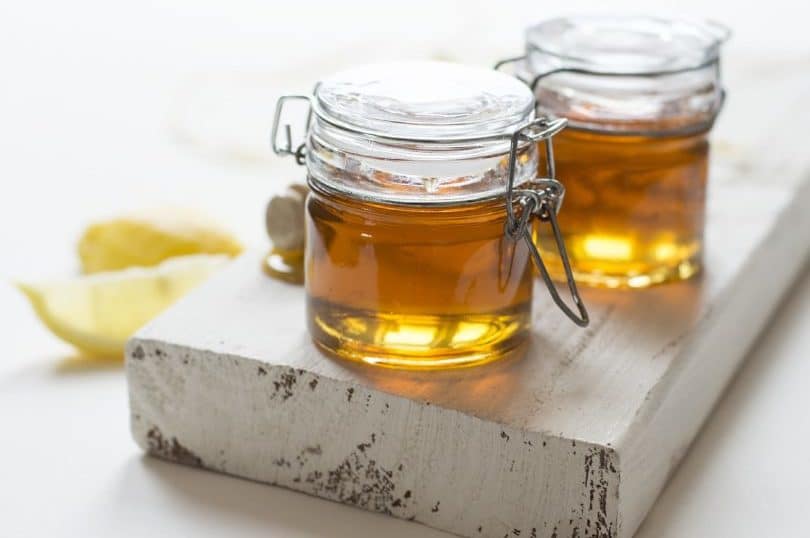I took a desserts cooking class this past weekend (at a really great place in Seattle called Hipcooks…check them out). We made Tarte Tatin, Lemon Tartlettes, Molten Chocolate Cake, and Croquembouche (Italian wedding cake). Fancy, right?
Surprisingly simple, actually. And, of course, loaded with sugar. (Mmmm…sugar.) I’m still coming down from the high.
My little sugar binge reminded me of a question I’ve been getting a lot recently: How do you feel about “natural” sweeteners?
This is a great and juicy question, particularly for someone like me (and my boyfriend) who has a crazy sweet tooth.
Read on for my take on five of the most common “natural” sweeteners, including a few things that may surprise you.
Before I get into specifics, remember that sugar is sugar, regardless of its form. Just because a sweetener is more “natural” than refined white sugar doesn’t mean you should dump the entire container into your oatmeal or coffee. (This is precisely why I don’t keep much maple syrup in my house. If I did, I’d probably drink it straight from the bottle, I love it so much.)
Agave.
Agave has gotten lots of press – good and bad – over the years. I use agave when I want a neutral-tasting sweet flavor, like in coffee or in baked goods with competing flavors. It’s made from the sap of the agave plant and became popular as a low-glycemic sweetener, meaning that it doesn’t spike blood sugar the way that refined white sugar does. This makes agave a great option not only for diabetics but also for those of you trying to avoid sugar crash-induced cravings.
Agave is, however, high in fructose, which is the main reason for agave concerns. Fructose is metabolized in the liver, so excessive amounts of it can cause an increase in triglycerides. Increased triglycerides = unhappy heart. Some studies have shown that even moderate amounts of agave can cause problems. Check out this post for a good overview of the issues around agave if you’re concerned.
My bottom line? Don’t go nuts. Agave is uber sweet and has more calories per teaspoon than table sugar, so use it sparingly.
Coconut sugar.
This is my preferred sweetener for pretty much everything these days. I use it in tea, coffee, and as a replacement for white sugar in baked goods or other recipes.
Coconut sugar is also a low-glycemic sweetener with a fairly neutral sweet flavor (oddly, it doesn’t taste like coconut). Extracted from the sap of coconut palm flowers, coconut sugar has a rich, brown sugar-like flavor that I love. It also contains lots of minerals and vitamins (albeit at fairly low levels), something you definitely won’t find in white sugar. You can find coconut sugar in both crystallized and liquid forms (sometimes called coconut nectar) at Whole Foods or other natural foods markets. I buy a brand called Coconut Secret.
Fun coconut sugar fact: Coconut sugar and palm sugar (from the leaves of the coconut palm) are both used frequently in dishes from Southeast Asia, including one of my favorite Indonesian dishes, Bubur Injin (black rice pudding).
Honey.
I love honey, but find it overly sweet for some things (which is funny, since I’m a sugar fiend). Look for unrefined, raw honey to get the most nutritional benefit from naturally occurring vitamins, minerals, and enzymes that are stripped away when honey is heated and refined.
Fun honey fact: Raw honey has natural antibacterial properties and can be soothing to minor abrasions, burns, and rashes.
Turbinado sugar & raw sugar.
This one gets a little tricky. Depending on where you buy it and what you buy, turbinado or “raw” sugar could be nothing more than refined sugar with molasses – a by-product of sugar refinement and where all the juicy nutrition lives – added back in to give it that brownish color. Sneaky, right?
I guess that’s fine ’cause you’re still technically getting the “good stuff.” I, however, prefer to get my food in the most unadulterated state possible; I believe at the core of my being that whole food – even “whole” sugar (a total oxymoron, I realize) – has more nutrition wisdom in its little molecules than we could possibly imagine or replicate. If you want the real deal with vitamins and minerals intact, look for succanat which is dehydrated sugar cane juice, plain and simple.
Fun molasses fact: Blackstrap molasses is jammed with iron, calcium, and other essential minerals. Use it in granola or to brew up some “switzel,” a fortifying drink popular in Colonial America. (I had this stuff at Smorgasburg in Brooklyn one summer. So yummy!)
Stevia.
Okay, I’m just gonna say it: I kinda hate the taste of stevia. Generally speaking, I find that it leaves a weird, sort of metallic after taste. And it freaks me out how insanely sweet it is – about 200x sweeter than table sugar. Any more than like three granules makes me pucker in disgust.
Having said that, here’s what you should know about stevia if you do like the way it tastes:
Stevia is a plant native to South America, the leaves of which have been used as both sweetener and medicine for centuries (i.e., stevia is NOT sugar, like the other four sweeteners mentioned above). People dig it mostly because it has zero calories. If you want to give it a go, you can find stevia extracts in both powder and liquid forms. There are also products like Truvia that are stevia/sugar alcohol blends, meaning that the flavor is a bit different from pure stevia extract. Just be careful with sugar alcohols like erythritol and xylitol – they cause tummy issues for some people.
Not-so-fun stevia fact: If you’re allergic to ragweed or related plants (like daisies and chrysanthemums), steer clear of stevia.
You can also play around with maple syrup, brown rice syrup, barley malt syrup, and date sugar, all of which add a slightly different flavor and are varying degrees of “natural.”
What’s your favorite sweetener? Tell me what you use it for and why you love it in the comments!
xo,






